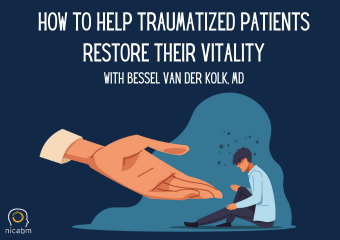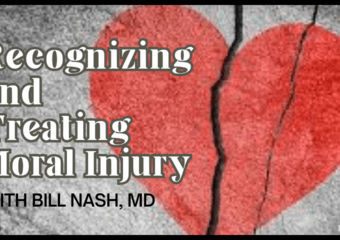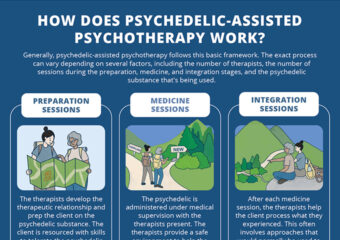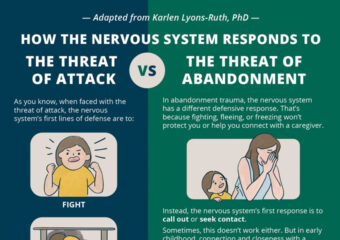So much of our work with traumatized patients is often centered around trauma stabilization and processing. . . . . . but if we don’t help patients move beyond these early stages of recovery, they’re at risk of staying stuck in the past, repeatedly re-engaging with their trauma. So in the video below, Bessel van […]
Recognizing and Treating Moral Injury – with Bill Nash, MD
Moral injury is not necessarily a new phenomenon in the human experience, but it’s a relatively young concept in the field of psychology. The research is still evolving – but we’re discovering more about the overlapping similarities and key differences between moral injury and PTSD. And as leading researchers like Bill Nash, MD uncover more […]
[Infographic] How Psychedelic-Assisted Psychotherapy Works
In recent years, there’s been a growing interest in the use of psychedelics in the treatment of trauma. And in all the excitement over the latest findings, some clients may be eager to experiment. The problem is, they may not always be aware of the risks involved – especially when it comes to taking that […]
[Infographic] How the Nervous System Responds to Abandonment
We know that in the face of threat, the nervous system responds in ways designed to help keep us safe. For example, if your client was under physical attack, their nervous system may have gone into fight, flight, or freeze. But of course, that’s only one type of threat. And the responses that might be […]
Treating PTSD and Traumatic Invalidation – with Martin Bohus, PhD
It used to be that when working with trauma, so much of our focus centered on helping clients process their traumatic experience. But over the past several years, we’ve gained a better understanding that that’s just one piece of the work – and perhaps now more than ever, we understand that multiple approaches are often […]




